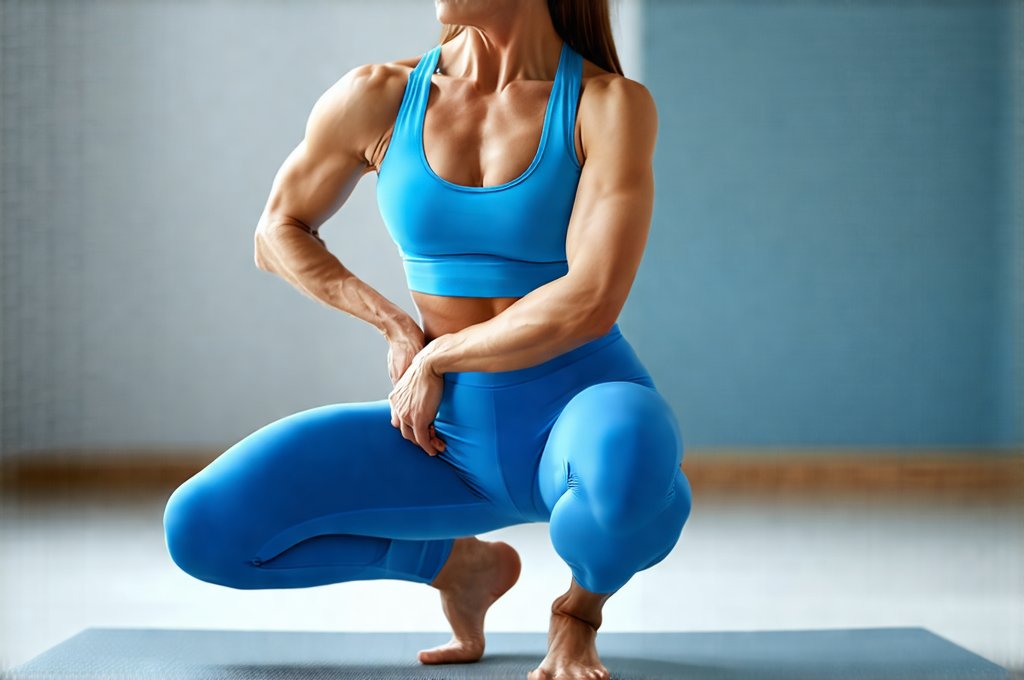The subtle interplay between hip mobility, pelvic floor function, and overall well-being is often underestimated. Many individuals experience discomfort stemming from stiff hips that unknowingly contribute to sensations like frequent urges – not necessarily related to underlying pathology, but rather a consequence of restricted movement patterns impacting the nervous system and surrounding structures. This isn’t about chasing extreme flexibility; it’s about restoring functional range of motion, allowing for smoother, more efficient movement which can ease tension and potentially reduce those unwanted sensations. Often, these sensations are amplified by stress or anxiety, creating a feedback loop where perceived urgency leads to increased tension, further limiting movement and exacerbating the cycle.
This article will explore gentle, accessible hip mobility drills designed to enhance pelvic circulation and address stiffness-related urges. The focus is on mindful movement – paying attention to what your body is capable of today, rather than striving for an ideal or comparing yourself to others. We’ll emphasize techniques that promote a sense of release and spaciousness within the pelvis, acknowledging the complex connection between physical movement and nervous system regulation. It’s important to remember that consistency is key; even short, regular sessions can yield significant benefits over time. If you experience any pain during these exercises, please stop and consult with a healthcare professional. You may also find it helpful to explore how to reduce frequency without medication as part of your overall wellness plan.
Understanding The Hip-Pelvis Connection
The hip joint itself is a remarkably stable structure designed for both strength and mobility. However, surrounding muscles – including the glutes, hamstrings, hip flexors, and adductors – profoundly impact its range of motion. When these muscles become tight or imbalanced, they can restrict hip movement and create compensatory patterns elsewhere in the body. This restriction isn’t limited to just physical limitations; it impacts blood flow, nerve function, and even lymphatic drainage within the pelvic region. The pelvis acts as a central hub connecting the upper body to the lower body, and its mobility is crucial for efficient movement and overall postural alignment.
Pelvic floor muscles are intimately connected to hip mobility. A stiff or restricted hip can place undue stress on the pelvic floor, leading to tension and potentially contributing to those unwanted urges. Conversely, improved hip mobility can help alleviate that pressure, allowing the pelvic floor muscles to function more optimally. It’s a reciprocal relationship – improving one often positively impacts the other. Many individuals unknowingly hold tension in their hips as a habitual response to stress or anxiety, further exacerbating these issues. Understanding your posture and its impact on pelvic health can also be beneficial.
Crucially, the nervous system plays a significant role. Chronic stiffness and discomfort can sensitize nerves within the pelvic region, leading to heightened awareness of bodily sensations – sometimes misinterpreted as urgency. Gentle movement helps ‘re-educate’ the nervous system, promoting a sense of calm and reducing that hypersensitivity. This is why mindful attention during these drills is so important; it’s not just about doing the movements but also feeling them and noticing any shifts in sensation. It can be helpful to explore natural ways to strengthen bladder walls as well.
Gentle Hip Circles
Hip circles are an excellent starting point for restoring mobility, as they address multiple planes of movement simultaneously. They can be performed seated or lying down, making them accessible to individuals with varying levels of fitness and flexibility. This exercise aims to gently mobilize the hip joint while promoting circulation throughout the surrounding tissues.
- Starting Position: Lie on your back with knees bent and feet flat on the floor (or sit comfortably in a chair).
- Initiate Movement: Slowly begin to move one leg in a circular motion, as if you are drawing a circle with your foot. Start with small circles and gradually increase the size of the circles as comfortable.
- Direction & Repetition: Perform the circles clockwise for approximately 10 repetitions, then counter-clockwise for another 10 repetitions. Repeat on the other leg. Focus on maintaining a smooth, fluid movement, avoiding any jerking or forcing.
The key is to listen to your body and avoid pushing yourself beyond your comfortable range of motion. If you feel any sharp pain, stop immediately. You can also modify the exercise by performing it seated if lying down feels uncomfortable. The circular movement encourages synovial fluid within the hip joint, promoting lubrication and reducing stiffness. It’s a subtle but powerful way to restore mobility and ease tension.
Pelvic Tilts
Pelvic tilts are a foundational exercise for improving pelvic awareness and control. They help strengthen the core muscles that support the pelvis and can improve range of motion in the lower back and hips. This is especially beneficial for those who spend long periods sitting, as it helps counteract the effects of prolonged static postures.
- Starting Position: Lie on your back with knees bent and feet flat on the floor. Maintain a neutral spine – meaning there’s a small natural curve in your lower back.
- Initiate Movement: Gently tilt your pelvis backward, flattening your lower back against the floor. You should feel your abdominal muscles engage slightly.
- Alternate & Repeat: Hold for a few seconds, then release and allow your lower back to return to its neutral position. Then, gently arch your lower back away from the floor (avoid excessive arching). Alternate between tilting backward and forward for approximately 10-15 repetitions. Focus on small, controlled movements.
Pelvic tilts are incredibly gentle yet effective at improving pelvic awareness and restoring a healthy range of motion. They also help to release tension in the lower back and hips. It’s important to focus on engaging your core muscles throughout the exercise to provide support for your spine and pelvis. This helps create stability and prevents any strain.
Butterfly Stretch with Gentle Pelvic Drops
This modified butterfly stretch combines gentle stretching of the inner thighs with subtle pelvic movement, promoting circulation and releasing tension in the hips and groin area. It’s a particularly effective drill for addressing tightness that may contribute to those unwanted urges. The ‘drops’ are incredibly small and should not feel like you’re forcing anything.
- Starting Position: Sit on the floor with the soles of your feet together, allowing your knees to fall open to the sides (butterfly position). Gently support yourself by leaning back onto your hands or elbows if needed.
- Gentle Drops: Keeping your spine straight, gently rock your knees towards the floor. You should feel a stretch in your inner thighs and groin. The movement is extremely subtle – think of it as a softening rather than a deep stretch.
- Small Pelvic Movement: As you gently lower your knees, incorporate small pelvic drops – allowing your pelvis to tilt slightly forward and backward with each breath. Hold the stretch for 5-10 breaths, then release slowly.
The key here is to avoid forcing the stretch. The goal isn’t to get your knees all the way down to the floor; it’s about creating gentle movement and releasing tension. The pelvic drops add another layer of mobility, encouraging circulation within the pelvis and promoting a sense of spaciousness. This exercise can be modified by sitting against a wall for added support if needed. Remember to breathe deeply throughout the stretch, allowing your body to relax and release any held tension.
It’s crucial to remember that these are gentle drills intended to support overall well-being. They are not substitutes for professional medical advice or treatment. If you have underlying health conditions or concerns, please consult with a healthcare provider before starting any new exercise program. The goal is to listen to your body, respect its limitations, and move in ways that feel comfortable and supportive. Consistent, mindful movement can be a powerful tool for enhancing pelvic circulation, reducing stiffness, and promoting a sense of calm within the body. Consider pelvic mobility drills to support complete voiding as well.





















